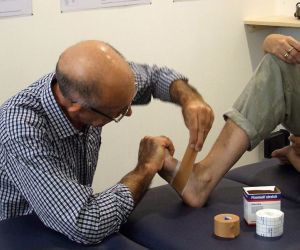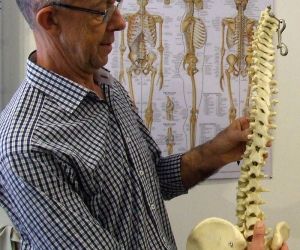Hips, knees, ankles and feet
Hips are treated with release of tight muscles and strengthening where there is muscle imbalance. Pain can be of arthritic origin. While arthritis cannot be reversed, maintaining good strength and flexibility can improve your ability to walk and move normally.
Knees pain is a common reason for seeing a physiotherapist. Peter will assess your knees for ligament and meniscus damage and ensure your patella (knee cap) is tracking correctly. Sometimes knee pain is related to pelvic asymmetry and/or muscle weakness, which can often be corrected. Home exercise is often the best approach to treatment.
Ankle injuries may require taping to unload injured ligaments. Peter will check for joint stiffness and mobilize affected joints in your ankle and foot. Strengthening exercises are usually indicated to protect the ankle from further injury and to allow return to normal activity. Balance and proprioception exercises are also an important part of the rehabilitation process.
Proprioception is the brain's awareness of where body parts are in space. Proprioception is often decreased after an ankle injury. Good proprioception allows the brain to know your ankle is going over before it happens, and recruit muscles to stop the injury. This normally happens without you being aware of it. Peter will teach you proprioception exercises to restore this important sense.
Foot pain can be due to joint and ligament problems. Pronation (flat feet) is often a problem. Plantar fasciitis is another common problem. If orthotics are required Peter will refer you to the best option for you.


